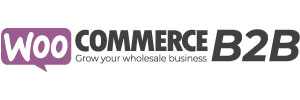It’s obvious that, increasingly, B2B buyers are expecting an eCommerce experience that resembles the one they have when buying on a B2C site. However, it’s important to comprehend that B2B and B2C eCommerce best practices have essential differences and each needs its own methods for attending to market requirements.
In our experience, there are a few B2B obstacles that are more pervasive than others. As your company changes and brand-new innovations emerge, your eCommerce site will start to show its age. We have actually mapped out some common pain points that most B2B organizations will experience eventually in their advancement, in addition to ways to resolve them.
Flexible shopping cart options
The requirement for a flexible shopping cart isn’t unique to B2B, however B2B business do have to put more care into its integration. You might have hundreds, or even countless different items in your catalog, in addition to other services, content, or product. As your operation grows and product offering adapts to client demands, one of your most significant concerns should be addressing this requirement.
Action Steps
- Shopping cart flexibility indicates working towards an eCommerce experience that lets you configure your shopping choices any way you want.
- Develop a long-term prepare for your eCommerce method that represents your increasing number of item and content offerings.
- Know how your current shopping cart extensions affect website efficiency, and begin thinking of how different methods might assist you attain your goals.
Unique inventory and service displays
B2B eCommerce providers require to personalize their purchaser experiences more than the normal B2C service. This applies to your marketing relationships along with how you provide your eCommerce experience. B2B sales tend to be greater touch procedures with lots of consumer contact. As such, you should have plenty of information to develop these experiences– provided your eCommerce platform is up to the task.
Action Steps
- Look for an eCommerce platform that supports personalization choices, such as filtering product catalogs by specific client or vendor.
- Apply these filters to each client throughout your UI, items, and experience to directly address your market.
- Consider ancillary shopping features that might be of specific interest to B2B buyers, such as bulk buying alternatives, easy reordering or volume discounts.
Multichannel optimization
While connecting with buyers on their own terms is very important in both B2C and B2B eCommerce, the latter relies greatly on a structured procedure for handling the many touchpoints present in a longer, more intricate sales cycle.
B2B buyers’ distinct choices and needs combined with highly customized service processes and purchasing situations mean that most deals will need some level of direct contact with a sales or consumer assistance agent. This does not suggest that an order will not be put online, nevertheless, that the sales group will require tools for:
- Supplying consistent, prompt and accurate pricing and item details.
- Creating and publishing client orders through the sales website which is handled along with orders from other sales channels.
- Post-order procedures remaining consistent from the confirmation email and delivery alert to data sync with backend systems and CRM.
- Available account details to allow the customer service agent to make relevant suggestions and offer the level of assistance necessary.
While these items might seem apparent, particularly from the standpoint of any marketing team in the B2C market, the majority of B2B companies aren’t able to get that done. With the web presence and different sales channels each producing orders, generating leads and creating accounts, it’s paramount that the channels “talk” to each other and develop a single customer profile to avoid missing out on opportunities.
Actions Steps
- Review any gaps or differences in the buying procedure between the numerous channels. Am I, the client, dealt with the same way despite how I put my order?
- Examine what happens when a client moves from one channel to the next (e.g. placing an order via the phone to buying via the website? Is it smooth?).
- Does the client have a 360 view of their own account? How simple is it to do things like schedule reorders or look up previous purchases?
What is in-depth client relationship management?
More so than in B2C markets, relationships drive B2B getting. Clients generally go through various touchpoints with a brand before dedicating to a sale, and for massive B2B purchases, the whole relationship might be managed through a high-touch sales procedure. B2B companies need effective ways to organize and manage these client information throughout the sales cycle.
Action Steps
- Acknowledge that B2B purchasers will still count on your sales teams and customer care agents to position their orders.
- Search for an eCommerce option that supports this relationship building through easy combination of sales, analytics, stock, and warehousing systems. It ought to also have the ability to support a complete set of customer data (order history, contact info, etc) or can fully integrate with a CRM system.
- Work towards an eCommerce experience that connects whatever together as a “single source of reality.” This is the most convenient way to manage customer relationships.
How does supply chain, vendor relationships, and fulfillment work in B2B eCommerce?
As your business grows, so too will your supply chain requirements and the interconnected relationship you have with suppliers. This applies to both B2C and B2B, but the stakes are higher in the latter. Purchases are larger, there’s more value bound in deals, and efficiency metrics (like on-time satisfaction) play a bigger role in whether or not the client will continue to buy from your company. In other words, you’ll need a method to preserve exposure in your supply chain operations, no matter how many vendor ERPs or touchpoints there are.
And fortunately, with contemporary, versatile eCommerce solutions that decouple the frontend from the backend, it’s easy to operate in the inventory management tools that add exposure into SKU tracking.
Action Steps
- Examine your current supply chain end-to-end and try to find knowledge spaces throughout supplier touchpoints, transfers, and transportation. Evaluation what kind of growth you can anticipate here – is that development supportable within the platform?
- Evaluation your eCommerce features and see whether your platform enables you to precisely track supply chain efficiency– not just for suppliers, but down to the SKU level.
- If these tools are doing not have, think about decoupled eCommerce integration solutions that make this granular inventory management possible.
What is the need for platform growth in B2B eCommerce?
As many B2B eCommerce providers find, eCommerce platforms can sometimes become barriers in and of themselves. Your existing solution might have worked fine for a while, however technology moves fast, and the functions that appeared excellent in 2015 are looking a little more sluggish today.
Be prepared for this inevitability prior to it takes place. Though it might not look like it, having a delayed eCommerce platform can in fact be a favorable thing. Your business is growing faster than your infrastructure can handle. And once you get a grip on a brand-new eCommerce option, there will be no place to go however up.
This is the idea underpinning more sophisticated eCommerce solutions, such as the headless method. Under headless eCommerce, your platform’s front- and back-ends are decoupled and separated– offering you more flexibility in how you set them up and total control over the customer experience.
Action Steps
- Acknowledge that your platform is growing– and though your abilities are struggling, this development suggests you’re on the ideal track.
- As you think about brand-new services, think outside the standard, full-stack box and explore the benefits of headless architecture.
- Decouple eCommerce frameworks use the simplest and most effective course to growth.
How to overcome the challenges of B2B eCommerce?
Although these six issues are by no means a comprehensive list of B2B eCommerce challenges you’ll experience, they’re all vital concerns to get rid of. Keep these requirements in mind as you plan out your eCommerce experience. You may discover that a new method can fix more concerns than you think.
Contact the Storehub.io sales team to book a consultation.
See More on: Sage Business Cloud eCommerce Integration












